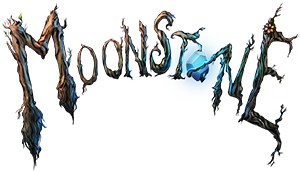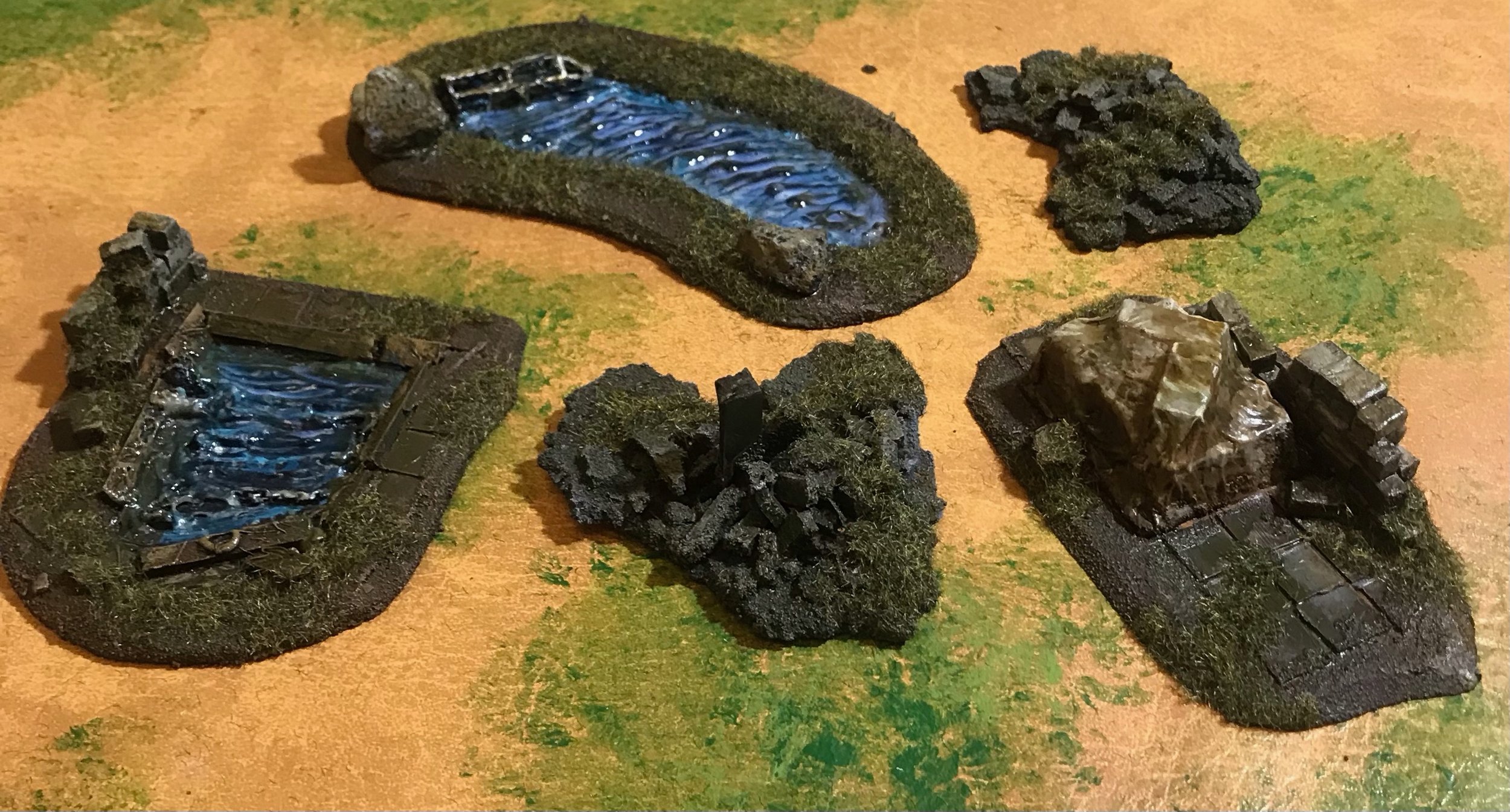“How Much Terrain Do I Need for Moonstone?”
One of the most recurring questions we get from gamers just beginning their Moonstone journey (right after “Is Doug the pug or the goblin?” and “Why is this game so brilliant?”) is “How much terrain do I need for a game of Moonstone?” Frankly, although we’ve answered that question a lot of times we don’t appear to have ever written it down anywhere.. so here we go!
I asked Tom for his views on this and his exact words were:
“Put two to three obstacles in the middle and make the rest of the board look good.”
Which is helpful but isn’t exactly comprehensive.. so we’ll expand on it a little.
For me, the most important factors to consider when laying out a table are:
Even spread, uneven advantages
Variety matters.
Even Spread, Uneven Advantages
Medium Amounts of Terrain
Although Moonstone can be played with very little, or a great deal of terrain, a ‘medium’ amount will create the most balanced experience. A large amount of terrain can hamper long-range arcane attacks to favour melee-focused troupes, while wide open spaces provide little room to take cover and the advantage is reversed.
So what is a medium amount? I’d say you need about 10-15 pieces across the table, the majority being small obstacle type terrain with 2-3 larger pieces such as houses, woods, hills and so on.
Yes, that is a plain wooden table, because the terrain stands out more. Stop picking.
Split the Table into a Grid
Before placing terrain I split the table into nine 1’ x 1’ squares, each of these squares is going to get either a couple of pieces of smaller scatter / obstacle terrain or a single bigger piece. This immediately means there’s going to be an even spread across the table without any massive gaps or hugely cluttered areas, and characters have space to manoeuvre or hide as they see fit.
The most important square to get right is the one in the very centre of the board, as most of the action will happen here. I’d recommend avoiding placing any big terrain pieces in the very centre of the table or too close to either side of it. For the centre, two to three small items of Obstacle scatter terrain such as boxes, barrels, wishing wells etc. is ideal providing the option of cover from Arcane attacks, without completely blocking the line of sight or running lanes. Alternatively, by placing slightly larger terrain pieces straddling the centre square and those around it, you can keep it free for drops but still make the board interesting to play on.
Another thing to bear in mind is trying not to box in the centre square - leave enough gaps in any terrain around it that dropped stones can escape, so you don’t create an accidental Kill Box and make Commonwealth humans very happy.
By moving the larger bridge terrain to straddle two squares it gives more room to drop stones.
The three squares touching deployment zones are generally going to see less action than the centre squares (unless you are playing a ranged or smash and grab focussed troupe). But these areas still need to be interesting and varied enough that they offer strategic choices to a player deploying (or hiding) there. Placing a massive wood in a deployment area is going to force most troupes into a more bunched-up deployment, though Fae and Faun players will love it, and a river crossing the whole deployment zone can often mean a player has to split his troupe entirely to get the stones.
Avoid Symmetrical Terrain
When I mentioned uneven advantages above, essentially what this means is there is no need to build symmetrical tables. There are some games that symmetrical deployment suits well, but an important part of Moonstone is the choice between controlling the Initiative and choosing the deployment table edge (Early Bird) at the game’s start. The initiative has its big, obvious advantages, but as they are so big the choice of table edge needs to be equally as important.
Part of this will be the stone drop, as an edge with more low-level stones will be more attractive to Fae players, whereas bunched stones will favour Gnomes and Soldiers, but the terrain should also be part of that choice. Will you take sub-optimal Moonstone placement for a better deployment zone? Is having a sniper elevated more important than stone depth? With symmetrical tables, the stone drop will be the only important factor, and this can lead to somewhat repetitive games.
Whilst not perfectly symmetrical, when played from top to bottom the table is similar enough that there are no real advantages to choosing either table edge.
Variety Matters
Now you have a clear idea of the amount of terrain you need, and how to place it, the next question is: what type of terrain do we use? My usual answer to this is as many types as you can.
Variety matters, not just in size but with the rules each terrain piece has - a pond and a wooded patch both slow movement, but as the wooded patch also blocks LoS it’s more annoying for Arcane attackers.
All these terrain pieces slow movement, but the rubble and walls also affect the line of sight and cover.
Take a look at page 26 in the main rulebook, you’ll see the Terrain rules that break terrain down into:
Open Ground - This is the default for the board itself, so you'll not have to worry too much about this one unless you’ve got a really hard-core sculpted table!
Water Features - Small ponds, rivers, moats, etc. These tend to slow movement but not affect LoS, so can give ranged models a safe shooting position, or healers something to hide behind.
Wooded Patches - These are usually a base with with multiple trees modeled on them. In these cases, the individual trees are not considered individually and are aesthetic, but the whole base affects line of sight, granting cover and slowing movement. Wooded patches make a big difference in play and hamper some troupes far more than others.
Obstacles - Boxes, crates, walls, rocks, wagons, hedges, plant pots, stumps, even cows. Obstacles are anything that could reasonably be crossed without special equipment such as ladders, but require some extra effort compared to open ground. A general rule I play by with obstacles is if 10-year-old Mick could have scrambled over it, it’s fine. Obstacles are excellent for breaking up clear paths and providing cover, so are one of the most useful items of terrain to have in your collection.
Barriers - Solid building walls are the most common barriers, but anything that can’t be seen or moved through like obelisks, large individual tree trunks or cliff faces are barriers. These are the only terrain types that stop Faeries flittering about being irritating, so it’s a good idea to have at least 1 or 2 in play at any time. As they completely block movement and LoS too many barriers will have a major effect on the game.
Trying to have a little bit of all of this represented on the table will make your games much more fun and variable. For some characters, the right terrain can make a massive difference, especially when playing Joanna (woods), Bristlenose (water), Muridae (buildings), and Grub (obstacles).
What Next?
Of course our display tables tend to ignore all the rules anyway, they just look good!
Play Games! Lie! Tell the Truth! Steal Moonstones and be merry! Hopefully, this article has given you some ideas about terrain deployment and building a decent table to play on. I guarantee it’s the driest article I’ll ever write for GKG but it is important so I guess I’ll behave for once.
And if you have any questions remember to ask them on our Discord’s terrain channel!
Mick










